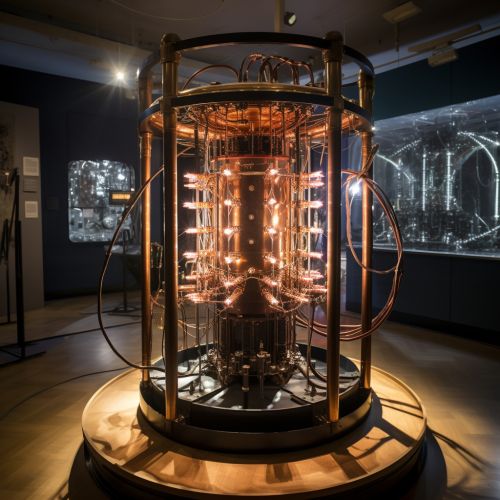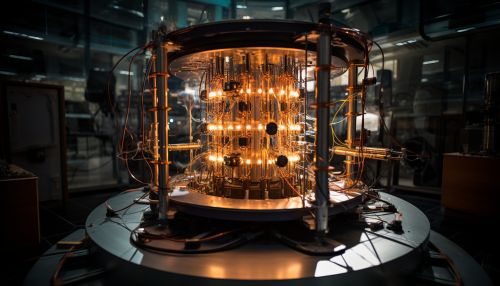Large Underground Xenon (LUX)
Overview
The Large Underground Xenon (dark matter) experiment, commonly referred to as LUX, is a direct detection experiment designed to observe the interactions between Weakly Interacting Massive Particles (WIMPs) and ordinary matter. The experiment utilizes a dual-phase xenon detector, housed deep underground at the Sanford Lab in Lead, South Dakota, USA. The LUX experiment aims to detect the faint interactions between WIMPs and xenon atoms, which could provide evidence for the existence of dark matter.


Design and Operation
The LUX experiment uses a dual-phase xenon detector, which operates by detecting the scintillation and ionization signals produced when a particle interacts with a xenon atom. The detector is filled with approximately 370 kg of liquid xenon, which is kept at a temperature and pressure that allows a small fraction of the xenon to remain in the gas phase. The detector is divided into two regions: the target region, which contains the bulk of the xenon, and the gas region, which is a thin layer of xenon gas above the liquid.
When a particle, such as a WIMP, interacts with a xenon atom in the target region, it produces a small flash of light (scintillation) and ionizes the xenon atom. The ionization electrons are then drifted upwards by an electric field to the gas region, where they produce a second flash of light. The time difference between the two flashes allows for the determination of the depth of the interaction in the detector, while the ratio of the sizes of the two signals can be used to distinguish between different types of interactions.
The LUX detector is housed deep underground in order to shield it from cosmic rays, which could produce false signals. The detector is also surrounded by a water tank, which serves as additional shielding from natural radioactivity in the surrounding rock.
Results and Impact
The LUX experiment has set some of the most stringent limits on the interactions between WIMPs and ordinary matter. Despite these limits, the LUX experiment has not yet observed a definitive signal of dark matter. The results from LUX, along with other similar experiments, have significantly constrained the parameter space for WIMP dark matter.
The LUX experiment has also contributed to the development of new technologies and techniques for dark matter detection. The dual-phase xenon detector used by LUX has proven to be a highly effective design, and similar detectors are being used in several other dark matter experiments.
Future Prospects
The LUX experiment has been succeeded by the LUX-ZEPLIN (LZ) experiment, which uses a similar design but with a much larger xenon target. The LZ experiment is expected to significantly improve upon the sensitivity of LUX and has the potential to make a definitive detection of WIMP dark matter.
